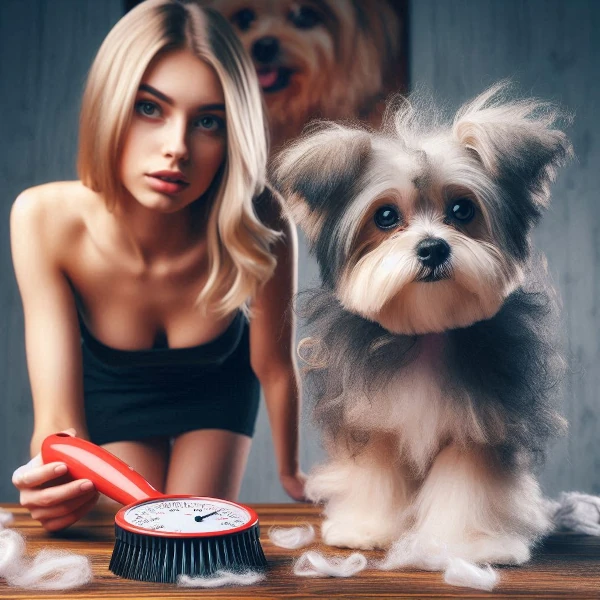How to take care of my dog during its shedding period?
Understanding Shedding in Dogs
Shedding is a natural process where dogs lose their fur to renew their coat. It mainly occurs twice a year: in spring and autumn. However, some dogs, like short-haired breeds, shed fur year-round.
Which Dogs Shed the Most?
Certain dogs, like those listed below, are particularly known for their heavy shedding.
- Siberian Husky: Known for shedding a large amount of fur twice a year.
- Golden Retriever: This elegant breed sheds year-round with seasonal peaks.
- Akita Inu: Has a thick undercoat that sheds heavily during shedding periods.
- German Shepherd: Sheds heavily, especially during seasonal changes.
- Labrador Retriever: Sheds regularly, requiring frequent grooming.
- Samoyed: Its thick white fur requires intensive brushing during shedding.
- Chow Chow: This breed with dense fur sheds heavily.
- Welsh Corgi: Despite its size, this compact breed sheds considerably.
- Alaskan Malamute: Like the Husky, it sheds spectacularly.
- Saint Bernard: Its large size and thick undercoat result in heavy shedding.
Which Dogs Shed the Least?
Certain dogs, like those listed below, shed little to no fur, making them ideal for people sensitive to fur or looking to minimize grooming.
- Poodle: Known for its curly coat that retains dead fur.
- Bichon Frise: Another hypoallergenic breed with minimal shedding.
- Shih Tzu: Sheds very little but requires regular grooming.
- Basenji: This African breed sheds very little.
- Kerry Blue Terrier: Has a coat that grows continuously rather than shedding.
- Bedlington Terrier: Woolly coat with minimal shedding.
- Lagotto Romagnolo: Sheds little, ideal for allergy sufferers.
- Barbet: French water dog with a dense coat and minimal shedding.
- Yorkshire Terrier: Fine, silky coat similar to human hair.
- Maltese: Sheds very little but requires frequent brushing.
Factors Influencing Shedding
- Breed: Dogs with dense undercoats, like Huskies, shed more intensely.
- Climate: Temperature variations influence seasonal shedding.
- Health: Poor diet or skin problems can increase fur loss.
- Age: Young dogs often shed when transitioning to an adult coat.
Techniques for Effectively Managing Shedding
Regular Brushing
Daily or weekly brushing, depending on the breed, is essential. Use a brush suitable for your dog's coat type:
- Pin Brushes: For long-haired dogs.
- Soft Bristle Brushes: Ideal for short-haired dogs.
- Slicker Brushes: For removing dead undercoat.
Diet and Supplements
A balanced diet rich in omega-3 and omega-6 promotes a healthy coat. Consult your vet for suitable supplements.
Appropriate Baths
A monthly bath with a specialized shampoo can help remove dead fur. Be careful not to bathe your dog too frequently, as it can dry out their skin.
Indoor Environment
Maintaining good indoor humidity helps prevent skin dryness and excessive fur loss.
Tips for Keeping Your Home Clean
- Use a powerful vacuum designed for pet hair.
- Regularly wash cushions and rugs.
- Use washable covers on furniture.
- Invest in a lint roller for clothes.
- Spray an anti-static spray on fabric surfaces to ease cleaning.
Other Tips for Dog Owners
© 2023 touslestoutous.com − All doggies. All rights reserved.
"The data available on this site may be used provided that the source is duly acknowledged."
